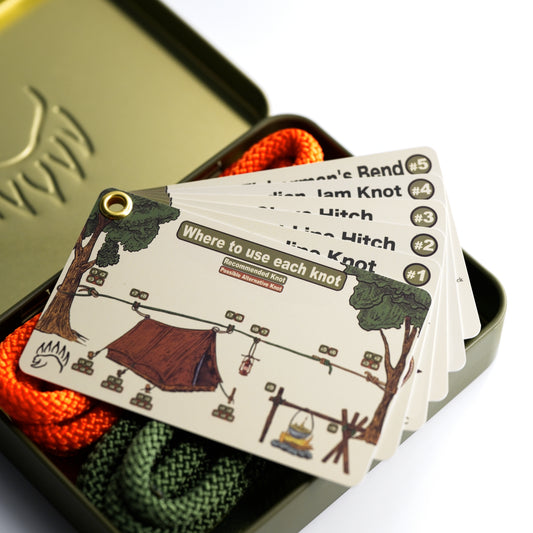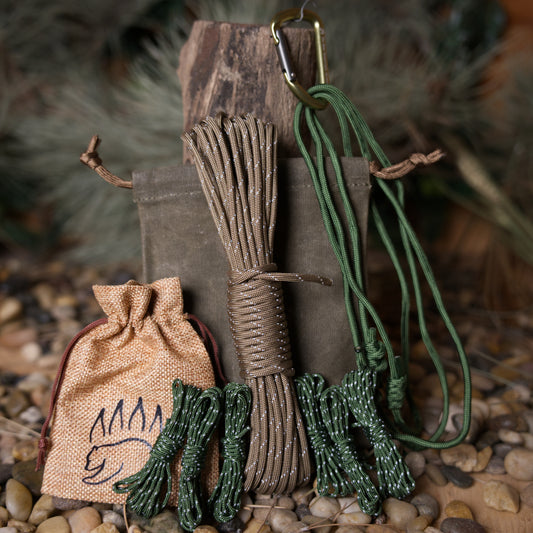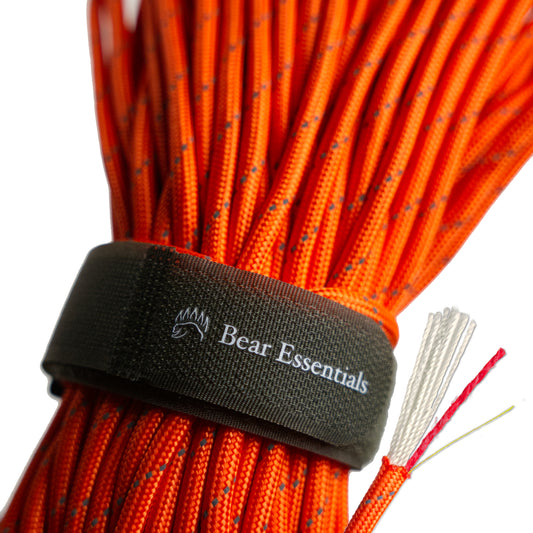How to Tie the Kamikaze Knot
Usage
The Kamikaze Knot is a specialized binding knot used in climbing to shorten ropes for rappelling while enabling quick retrieval under tension. It is designed for extreme scenarios, where a rapid rope release is necessary, though it carries significant risks due to its instability under varying loads.
Why Learn the Kamikaze Knot?
Its unique release mechanism allows climbers to recover rope in critical situations. However, it is a last-resort tool for experienced climbers and should only be used when rope retrieval is an absolute necessity.
Common Uses
-
Climbing:
- Allows rope retrieval after rappelling by releasing when shaken.
- Used in last-man rappels to minimize rope loss at anchors.
-
Utility (Rare):
- Shortens ropes temporarily in non-critical tasks (though safer alternatives are preferred).
ABOK Number
(Ashley Book of Knots)
Other Names
Category
|
Notable Features
- Quick Release: Unties with a shake, facilitating rapid rope recovery.
- Adjustable Tension: Holds under specific tension levels but releases under too much load.
- Minimal Anchor Loss: Leaves only a small rope segment at the anchor.
Variations
(No variations mentioned; section left blank.)
Similar Knots
Highwayman’s Hitch vs. Kamikaze Knot
- Pros: Quick-release knot for temporary mooring, safer for non-critical tasks.
- Cons: Less suited for rappelling or rope retrieval scenarios.
Bowline vs. Kamikaze Knot
- Pros: Stable and secure for anchoring, widely used in climbing.
- Cons: Does not allow rope retrieval or release like the Kamikaze Knot.
History
The Kamikaze Knot, a variation of the Sheepshank, likely emerged in climbing communities, with its use popularized in the 1950s by Japanese climbers seeking safer rappelling methods. Its name reflects its high-risk nature, akin to a “suicide knot,” due to its instability. Referenced in The Ashley Book of Knots (#1154) as part of the Sheepshank family, its adaptation for rope retrieval has made it a niche tool in extreme climbing scenarios, though its dangers limit widespread use.
Security Level
The Kamikaze Knot is inherently unstable, holding only under specific tension and prone to failure under too much or too little load. It is not safe for general use, especially with ropes of different diameters or slippery materials, and should only be employed in desperate situations where rope retrieval is critical. Its use in last-man rappels requires supreme confidence in knot-tying skills and thorough testing.
Downsides
- High risk: Unstable and prone to failure under improper tension or with unsuitable ropes.
- Not safe: Unsuitable for critical or life-support applications due to its release mechanism.
- Specialized use: Limited to extreme climbing scenarios, with safer alternatives preferred.
Structure
- Construct a standard Sheepshank by folding the rope into three parallel sections, creating two bights, and securing each bight with a half hitch around the outer strands.
- Maintain sufficient tension on the Sheepshank to prevent it from slipping.
- Carefully slice the middle rope section between the two half hitch knots, ensuring the knot remains under tension.
- Attach the knot to an anchor at the top of the rappel, with the longer rope segment used for descent.
- After rappelling, shake the rope to release the knot, allowing the longer segment to fall while leaving a small piece at the anchor.
Pro Tip: Use only thick, non-slippery ropes to reduce the risk of slippage.
FAQ
Is the Kamikaze Knot safe for rappelling?
No, it’s highly unstable and should only be used in desperate situations by experienced climbers.
What ropes work best for the Kamikaze Knot?
Thick, non-slippery ropes are essential to minimize slippage risks.
How does the Kamikaze Knot compare to the Sheepshank?
It’s a high-risk variation designed for rope retrieval, unlike the safer, standard Sheepshank for shortening.
Can the Kamikaze Knot be used with different-diameter ropes?
No, it’s unsafe with mismatched ropes, increasing the risk of failure.
Why choose the Kamikaze Knot over safer knots?
It’s only chosen in extreme cases where rope retrieval is critical and no safer options exist.
Important Notes on Safety
The Kamikaze Knot is extremely dangerous due to its instability and should only be used by experienced climbers in life-or-death situations where rope retrieval is essential. Common failure points include improper tension, slippery ropes, or mismatched diameters, which can cause catastrophic slippage.
- Use only with thick, non-slippery ropes of identical diameter.
- Inspect the rope and knot thoroughly before use to ensure no fraying or damage.
- Practice in a controlled, low-risk environment and never rely on this knot unless absolutely necessary.









